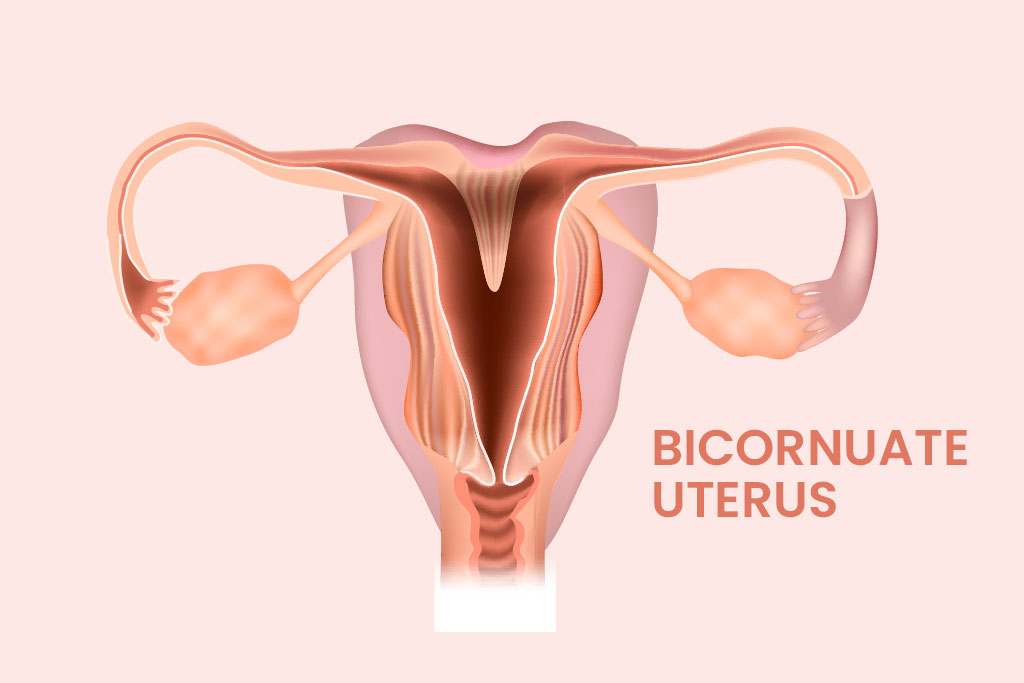What Are the Causes of Bicornuate Uterus?
Bicornuate uterus is believed to result from an anomaly in development.
Here’s a breakdown of the main causes of bicornuate uterus.
The development of the female uterus happens when she is in the womb of her mother. During fetal development, between weeks 10 and 20 of pregnancy, two structures called Mullerian ducts normally fuse to form the uterus and cervix. In the case of a bicornuate uterus, these ducts fail to completely merge in the upper portion, resulting in a uterus with a slight indentation or a more prominent heart-like shape. The exact reason behind this condition is not clear, but the following are the factors that could lead to a bicornuate uterus.
- Genetic Factors: The genetic causes of the uterus are linked to changes in genes that affect the development of embryos and the formation of ducts. There may also be connections to abnormalities or genetic conditions.
- Environmental factors can influence the development of a bicornuate uterus, however the mechanism is still unclear. A drug named diethylstilbesterol, which is withdrawn now, was linked to developmental defects in the uterus.
What Are The Symptoms of Bicornuate Uterus?
Symptoms of bicornuate uterus may include:
- Frequent miscarriages (usually more than three). Repeated instances of miscarriages may frequently occur in cases involving a bicornuate uterus due to its unique shape, potentially leading to insufficient support for an underdeveloped fetus.
- Premature birth and pregnancy complications
- Painful menstruation, or dysmenorrhea, can be intensified in individuals with a bicornuate uterus due to the abnormal uterine shape, requiring appropriate management.
- Painful intercourse: Dyspareunia, or painful intercourse, can be experienced by individuals with a bicornuate uterus.
What Are The Treatments For Bicornuate Uterus?
Various methods like ultrasound, HSG, MRI, and laparoscopy are used to diagnose a bicornuate uterus. Bicornuate uterus treatment can differ based on the symptoms or issues faced by the individual.
- Symptomatic treatment is advised for painful menses or painful intercourse.
- Medical assistance for conception may be needed in some cases.
- High-risk obstetric care is needed during pregnancy as the possibility of miscarriage and premature delivery is very high.
- Surgery Possible options could involve surgery for the uterus to enhance results, for pregnancy-related concerns. However the surgery is to be done taking in to consideration the intricate anatomical details.
- It’s crucial to seek guidance from a healthcare professional to decide on the steps considering individual circumstances.
If there are no fertility problems or noticeable symptoms, no specific treatment may be necessary. However, if issues like repeated pregnancy loss or premature birth arise, treatment might be recommended.
Conclusion
In conclusion, a bicornuate uterus is a condition that can lead to various challenges like infertility, miscarriages, and premature delivery. While it may not always cause noticeable symptoms, it’s important to seek medical attention if you experience painful menstruation, or have difficulty getting pregnant. With proper diagnosis and treatment, it’s possible to manage the complications associated with this condition and have a successful pregnancy. If you have any concerns or questions, it’s best to speak with your healthcare provider to determine the best course of action for your circumstances.

